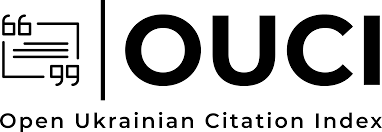The Role of Anti-Müllerian Hormone in Oocyte and Embryo Quantity and Quality in IVF
DOI:
https://doi.org/10.54361/ajmas.258370Keywords:
Anti-Müllerian Hormone, In Vitro Fertilization, Oocyte Quality, Infertility, Embryo Quality, Ovarian Reserve.Abstract
The aim of this study was to explore the association between AMH and the number and quality of oocytes and embryos in IVF. This was a retrospective study in Benghazi Infertility Teaching Hospital, Libya, and included women being treated for infertility by in vitro fertilization (IVF) and intracytoplasmic sperm injection (ICSI) during the period January-September 2021. The study population consisted of women 18-40 years of age with infertility, who received controlled ovarian stimulation with either antagonist or agonist protocols. Inclusion criteria included an initial antral follicle count (AFC) ≥5 and complete records of hormonal levels, stimulation modality, and embryology reports. The analytical reliability of commercially available ELISA kits was confirmed with the intra- and inter-assay coefficients of variation being less than 10% and 5%, respectively, in the present study. Oocyte maturity was determined on the basis of standard criteria, and embryos were graded on day 3 of development using the Istanbul consensus scoring system. Out of the 156 women included, 48.7% were between 31-40 years, and 42.9% were over 40 years of age. An inverse correlation between age and AMH levels was found to be statistically significant (P = 0.002). AMH values significantly correlated with the required dose of HMG during ovarian stimulation (P < 0.001), with women presenting with higher AMH levels requiring lower doses of gonadotropins. The average number of oocytes retrieved differed significantly between AMH groups (p<0.001), with increasing AMH associated with greater numbers of oocytes retrieved. The number of MII oocytes decreased significantly with decreasing levels of AMH (p<0.001). The numbers of grade I embryos were significantly decreased with a decline in the AMH levels (p<0.001), while the fertilization rate did not differ between the groups. The probability of reaching embryo transfer was strongly affected by the value of AMH (p<0.001). AMH is an optimal test for predicting ovarian reserve; it correlates well with age and FSH level and is a good predictive model for IVF outcomes, which require quantitatively large numbers of oocytes and embryos. This biomarker is unmissable for personalized gonadotropin stimulation protocols and powerfully predicts the likelihood of patients reaching embryo transfer and is therefore an essential parameter for patient counseling and treatment individualization in today's fertility centers.
Downloads
Published
How to Cite
Issue
Section
License
Copyright (c) 2025 Gehan Elfrgani, Basma Elomami, Asma Zubi

This work is licensed under a Creative Commons Attribution 4.0 International License.














